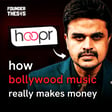
Seeking Impact, From Dairy To DeFi | Srikumar Misra @ Aarna Protocol
If you want to understand the evolution of Entrepreneurship in India over the decades, then there is really no better story than this.
Srikumar Misra is the son of an entrepreneur who made the mistake of taking a bank loan backed by him home, and his untimely death ended up teaching the young Sri a valuable lesson about the risks of entrepreneurship.
And you might think that this experience would scar him for life, but it was actually the opposite - despite having a successful global career in the Tata Group, he decided to quit his well-paying job and come back to India to set up a consumer brand in the dairy industry in his home state of Odisha.
And after a 2-year struggle to raise funds to get his business off the ground - Sri finally succeeded in launching Milk Mantra which sells its products under the Milky Moo brand name and is one of the few profitable players in the premium dairy segment.
After scaling Milk Mantra, Sri was bitten by the entrepreneurial bug again and he is currently building Aarna Protocol - the first of its kind AI powered crypto investing platform.
This conversation is a gem in which Sri took us from the very offline and traditional world of selling dairy products to building a tokenized decentralised finance platform to invest in crypto currency.
Stay tuned and subscribe to the Founder Thesis podcast with Akshay Datt.



















